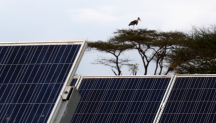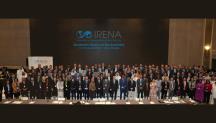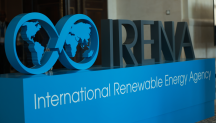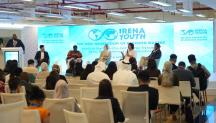

Revised Power Plans Can Speed Up Southern and Eastern Africa’s Energy Transitions
Newsletter
Africa desperately needs electricity for its socio-economic development. Over the last 25 years, demand in Eastern and Southern Africa has grown at an annual average of 3.3%. By 2040, total demand in countries included in the Eastern Africa Power Pool and Southern African Power Pool are expected to triple to approximately 1600 TWh.
This demand can certainly be met with the continent’s abundant but currently hugely untapped renewables resources. Northern and Southern Africa are among the sunniest places on earth. Wind speeds are impressively high in East, Northern and Southern Africa. In terms of hydro discharge volume, the Congo River is second only to the Amazon. To unlock this potential, Africa needs to revise its regional master plans that currently favour fossil-fuels despite the enormous advances and cost reductions of renewable technologies.
IRENA identified 4290 renewable energy zones in countries included in the African Clean Energy Corridor (ACEC)* , with solar and wind power offering generation potential as much as 7 TW and 2 TW respectively, of which more than 99% are still untapped. Such potential offers an opportunity for the region to integrate renewable energy in its power pools master plans and meet its energy needs.
Current master plans of the Eastern and Southern African power pools foresee the addition of more than 100 GW of new coal-fired capacities by 2040. Unless these plans are revisited and revised with a view on including the regions’ abundant low-cost renewable resources, CO2 emissions will triple from 407 Mt/year in 2016 to 1 200 Mt/year in 2040.
IRENA’s assessment of the future of the ACEC power systems further challenges the need for 100 GW plus of new coal capacities. The deployment of solar photovoltaic (PV) and wind technologies in the identified zones combined with investment in adequate transmission infrastructures can avoid a build-up of coal capacities in a cost-effective and climate compatible manner. Moreover, the implementation of new solar PV and wind projects together with hydropower provides the bulk of additional generating capacities to meet ACEC future demand at a low cost, eliminating the need to construct new coal power plants.
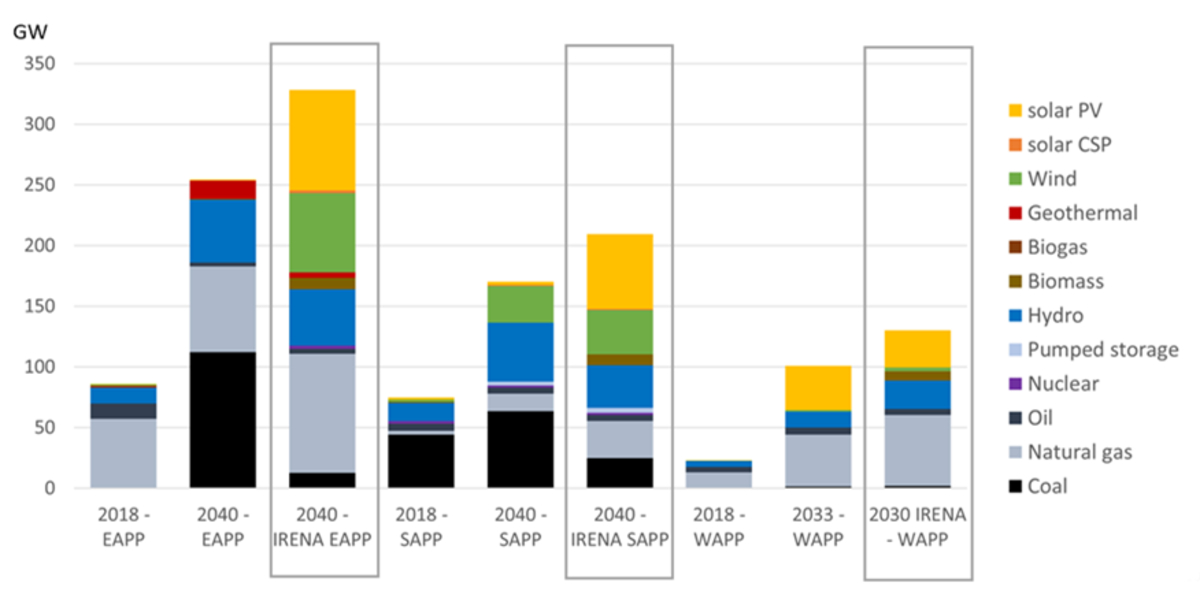
Sources: Southern African Power Pool (SAPP) and Eastern Africa Power Pool (EAPP) master plans (EAPP, 2014; SAPP, 2017), and IRENA’s modelling results for SAPP and EAPP countries.
The assessment, explored in IRENA’s recently released Planning and Prospects for Renewable Power: Eastern and Southern Africa, highlights the opportunity for Southern and Eastern Africa to take advantage of the identified renewables potential and the obvious cost benefit it brings. Updating their power pool master plans can bring ACEC countries towards the energy transitions pathway with great pace.
* ACEC spans covers all countries in the SAPP and EAPP, namely Angola, Botswana, Burundi, Democratic Republic of the Congo, Djibouti, Egypt, Ethiopia, Eswatini, Kenya, Lesotho, Malawi, Mozambique, Namibia, Rwanda, South Africa, South Sudan, Sudan, Uganda, United Republic of Tanzania, Zambia and Zimbabwe.
Expert Insight by:
Asami Miketa
Senior Programme Officer, Power Sector investment Planning, Innovation and Technology Centre, IRENA

Expert Insight by:
Yunshu Li
Associate Programme Officer, Modelling the Global Energy Transition, Innovation and Technology Centre, IRENA
© IRENA 2024
Unless otherwise stated, material in this article may be freely used, shared, copied, reproduced, printed and/or stored, provided that appropriate acknowledgement is given of the author(s) as the source and IRENA as copyright holder.
The findings, interpretations and conclusions expressed herein are those of the author(s) and do not necessarily reflect the opinions of IRENA or all its Members. IRENA does not assume responsibility for the content of this work or guarantee the accuracy of the data included herein. Neither IRENA nor any of its officials, agents, data or other third-party content providers provide a warranty of any kind, either expressed or implied, and they accept no responsibility or liability for any consequence of use of the content or material herein. The mention of specific companies, projects or products does not imply that they are endorsed or recommended, either by IRENA or the author(s). The designations employed and the presentation of material herein do not imply the expression of any opinion on the part of IRENA or the author(s) concerning the legal status of any region, country, territory, city or area or of its authorities, or concerning the delimitation of frontiers or boundaries.
